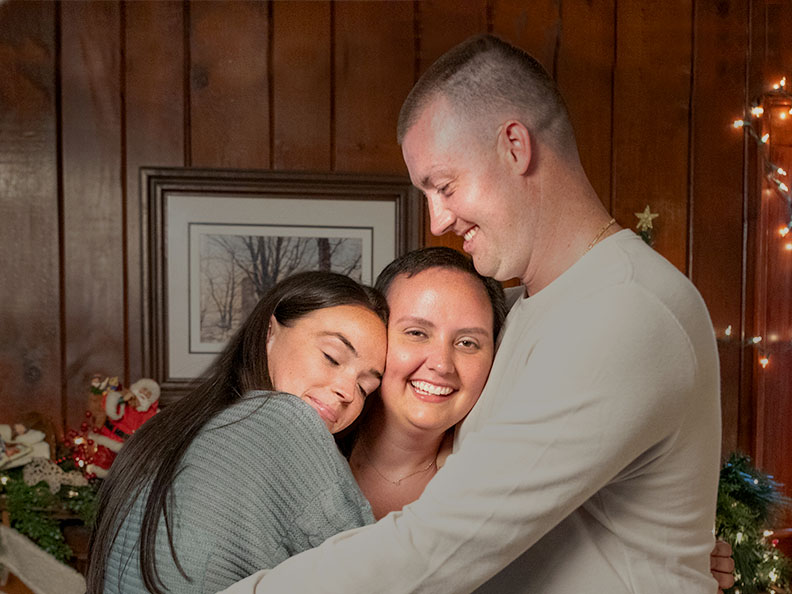Your gift is 100% tax deductible
Treatment of Acute Promyelocytic Leukemia (APL)
The most common approaches to treating acute promyelocytic leukemia (APL) in adults are described here. To learn how children with APL are treated, see here.
Prompt diagnosis and treatment of acute promyelocytic leukemia (APL), a subtype of acute myeloid leukemia (AML), is very important because people with APL can quickly develop life-threatening blood-clotting or bleeding problems if not treated. In fact, treatment might need to be started even if the diagnosis of APL is suspected but hasn't been confirmed yet by lab tests.
APL treatment differs from the treatment of most other types of AML. The most important drugs for treating APL are non-chemo drugs called differentiating agents, including all-trans-retinoic acid (ATRA) and arsenic trioxide (ATO). Other treatments might include chemotherapy (chemo) and transfusions of platelets or other blood products.
Treatment of APL is typically divided into 3 phases:
- Induction (remission induction)
- Consolidation (post-remission therapy)
- Maintenance
Induction
The goal of induction, the first part of treatment, is to get the number of leukemia cells to very low levels, putting the APL into remission. The most important drug in the initial treatment of APL is all-trans-retinoic acid (ATRA). This is usually combined with one of these:
- Arsenic trioxide (ATO), another non-chemo drug. For some people who have a higher risk of APL coming back after treatment, the targeted drug gemtuzumab ozogamicin (Mylotarg) might be added as well.
- Chemotherapy with an anthracycline drug (daunorubicin or idarubicin). For some people at high risk of APL coming back after treatment, the chemo drug cytarabine (ara-C) might be added as well.
- Chemotherapy (an anthracycline) plus ATO
ATRA plus ATO is the preferred treatment in people at lower risk of the leukemia coming back, as it tends to have fewer side effects. The remission rate with these 2 drugs alone is very high.
Chemo or gemtuzumab ozogamicin is more likely to be included in treatment if this risk is higher or if the white blood cell count goes higher.
A bone marrow biopsy with repeat genetic testing is usually done about a month or so after starting treatment, to see if the leukemia is in remission. Induction is typically continued until the APL is in remission, which might take up to 2 months.
Consolidation (post-remission therapy)
Once APL is in remission, consolidation therapy is needed to keep it in remission and try to get rid of the remaining leukemia cells. Which drugs are used depends on what was given for induction, as well as other factors. People typically get some of the same drugs they got during remission, although the doses and timing of treatment might be different. Some of the options include:
- ATRA plus ATO (Gemtuzumab ozogamicin is rarely needed once someone is in remission.)
- ATRA plus chemo (typically using an anthracycline such as idarubicin or daunorubicin)
- Chemo alone (typically with an anthracycline plus cytarabine)
Consolidation typically lasts for at least several months, depending on the drugs being used.
Maintenance
For some people, especially those at higher risk of the APL coming back, consolidation may be followed by maintenance therapy, which uses lower doses of drugs over a longer period of time. People who have a lower risk of the leukemia coming back and who have had a good response (molecular remission) to ATRA plus ATO generally do not need maintenance therapy.
Options for maintenance therapy are ATRA alone, or ATRA along with chemo (6-mercaptopurine (6-MP) and/or methotrexate). Maintenance therapy is typically given for about a year.
Treating APL that doesn't go away or comes back
Treatment for APL that doesn't go away or that comes back after initial treatment is discussed in If Acute Myeloid Leukemia (AML) Doesn't Respond or Comes Back After Treatment.
- Written by
- References

Developed by the American Cancer Society medical and editorial content team with medical review and contribution by the American Society of Clinical Oncology (ASCO).
Appelbaum FR. Chapter 95: Acute leukemias in adults. In: Niederhuber JE, Armitage JO, Doroshow JH, Kastan MB, Tepper JE, eds. Abeloff’s Clinical Oncology. 6th ed. Philadelphia, Pa. Elsevier: 2020.
Larson RA. Initial treatment of acute promyelocytic leukemia in adults. UpToDate. 2024. Accessed at https://www.uptodate.com/contents/initial-treatment-of-acute-promyelocytic-leukemia-in-adults on December 4, 2024.
National Cancer Institute. Acute Myeloid Leukemia Treatment (PDQ)–Health Professional Version. 2024. Accessed at https://www.cancer.gov/types/leukemia/hp/adult-aml-treatment-pdq on December 4, 2024.
National Comprehensive Cancer Network. NCCN Practice Guidelines in Oncology (NCCN Guidelines): Acute Myeloid Leukemia. V.3.2024. Accessed at https://www.nccn.org on December 4, 2024.
Last Revised: March 4, 2025
American Cancer Society medical information is copyrighted material. For reprint requests, please see our Content Usage Policy.
American Cancer Society Emails
Sign up to stay up-to-date with news, valuable information, and ways to get involved with the American Cancer Society.



